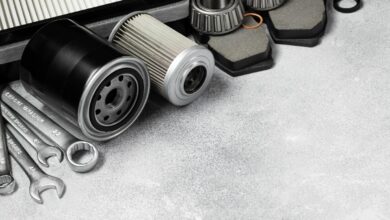Choosing the Right Water Pressure Reducing Valve for Buildings
Water pressure is an essential factor in any plumbing system. While high water pressure can be damaging to your pipes and fixtures, low water pressure can be equally frustrating. To strike the perfect balance and protect your plumbing, a water pressure reducing valve (PRV) is crucial. In this comprehensive guide, we’ll explore the world of water pressure reducing valves, helping you choose the right one for your plumbing system.
Understanding Water Pressure
Understanding water pressure is fundamental when dealing with plumbing systems. Water pressure refers to the force that pushes water through pipes and into your fixtures. To maintain a well-balanced plumbing system, it’s crucial to have the right amount of pressure. Too much pressure can strain pipes and appliances, leading to leaks and damage. On the other hand, insufficient pressure can result in slow water flow and inadequate performance. This is where water pressure valves, such as pressure reducing valves (PRVs) or water pressure relief valves, come into play. They help regulate and maintain the optimal water pressure within your plumbing system, ensuring a smooth and efficient flow of water throughout your home or business. Understanding how these valves work and their importance is key to achieving a reliable and durable plumbing setup.
The Role of Water Pressure Reducing Valves
Water pressure reducing valves, commonly known as PRVs, play a pivotal role in maintaining the equilibrium of water pressure within your plumbing system. These valves are designed to reduce high incoming water pressure to a safe and manageable level, protecting your pipes, fixtures, and appliances from potential damage caused by excessive force. By regulating water pressure, PRVs ensure a steady flow of water throughout your home or building while preventing leaks, bursts, and unnecessary strain on your plumbing infrastructure. Whether in residential or commercial settings, the reliable operation of water pressure reducing valves, also referred to as water pressure relief valves, is essential for the long-term health and efficiency of any plumbing system.
Types of Water Pressure Reducing Valves
When it comes to managing water pressure in your plumbing system, understanding the various types of water pressure reducing valves (PRVs) is essential. These valves play a crucial role in maintaining a safe and efficient water flow. There are several types of PRVs available, each designed for specific applications. The most common types include direct-acting PRVs, pilot-operated PRVs, and the water pressure relief valve. Direct-acting PRVs are simple and reliable, suitable for residential use. Pilot-operated PRVs offer precise control and are often used in larger systems. The water pressure relief valve is a safety valve that releases excess pressure to prevent damage. Knowing which type of PRV suits your needs is vital for effective water pressure regulation.
Factors to Consider When Choosing a PRV
When it comes to choosing the right water pressure reducing valve (PRV) for your plumbing system, several crucial factors should be considered. Firstly, assess your water pressure needs, as this will determine the ideal pressure range your PRV should handle. Next, consider the type of PRV that suits your application, whether it’s a direct-acting, pilot-operated, or a combination valve. Additionally, evaluate the material and construction of the PRV to ensure durability and longevity. The size and capacity of the valve must match your plumbing system’s demands. Lastly, don’t forget to factor in the ease of installation and accessibility for future maintenance. By carefully considering these factors, you can select the perfect water pressure reducing valve to maintain optimal water pressure and protect your plumbing system from damage.
Installation and Maintenance
Proper installation and regular maintenance are vital to ensure the effectiveness and longevity of your water pressure reducing valve (PRV). When installing a PRV, it’s crucial to follow manufacturer guidelines and enlist the services of a qualified plumber if needed. Additionally, routine maintenance, including checking for leaks, corrosion, and adjusting pressure settings, is essential to keep the valve functioning optimally. Neglecting maintenance can lead to decreased efficiency and potential issues. By dedicating time to installation and upkeep, you’ll enjoy consistent water pressure and protect your plumbing system from potential damage, enhancing the overall reliability of your home’s water supply.
Troubleshooting Common Issues
While water pressure reducing valves (PRVs) play a vital role in maintaining a balanced water flow within your plumbing system, they can occasionally encounter problems that affect their performance. Understanding how to troubleshoot these issues can save you time, money, and potential water damage. Common problems include leaks, erratic pressure, and valve failure. In this section, we’ll explore these issues in detail, providing step-by-step solutions and tips to ensure your PRV functions optimally. Whether you’re dealing with a faulty water pressure valve or seeking preventive measures, this guide will help you address common PRV-related challenges effectively.
Upgrading Your Plumbing System
Upgrading your plumbing system is a wise investment in the long-term health and efficiency of your home. One key component of this upgrade is the installation of a water pressure reducing valve (PRV). These devices, also known as pressure reducing valves or water pressure relief valves, play a vital role in maintaining optimal water pressure throughout your plumbing system. By controlling and regulating the water pressure, PRVs prevent the potential damage caused by excessive pressure, extending the lifespan of your pipes, fixtures, and appliances. In this article, we’ll explore the benefits of PRVs and guide you through the process of choosing the right water pressure valve for your specific needs.


